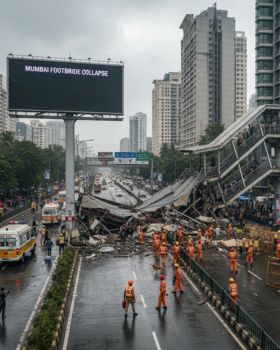
Disclaimer:
This blog post is intended for informational and educational purposes only. The references to the Fukushima Daiichi incident are based on publicly available information and are used here solely to highlight the importance of safety, risk management, and contractor oversight in high-risk environments. Our intention is not to assign blame or responsibility to any specific individuals or organizations. SHEQ Network respects the seriousness of such events and acknowledges the profound human impact they entail. While we aim to promote continuous improvement in safety practices, the examples provided should not be construed as definitive solutions or critiques. Readers are encouraged to seek professional guidance tailored to their specific operational and regulatory contexts.
On March 11, 2011, a massive 9.0 magnitude earthquake shook Japan, followed by a tsunami that reached heights of over 40 meters. These natural forces alone were devastating. But what made the Fukushima Daiichi Nuclear Power Plant incident historically tragic was the chain reaction of preventable failures that followed.
Three nuclear reactors melted down. Power was lost. Backup systems failed. And more than 150,000 people had to evacuate their homes due to radiation risk. The human cost was unimaginable.
While the disaster was triggered by natural forces, investigations later revealed a sobering truth: many of the plant’s vulnerabilities had been identified but were not properly addressed. There were missed opportunities to strengthen infrastructure, update emergency protocols, and—most critically—improve oversight of contractors responsible for maintaining key safety systems.
It’s here that we reflect not just on what went wrong—but how, with the right systems in place, similar disasters might be prevented in the future.
A Breakdown in Oversight and Accountability
Tokyo Electric Power Company (TEPCO), the plant’s operator, had long relied on external contractors for critical safety upgrades and maintenance. However, key recommendations went unimplemented:
- Seawalls were not raised despite known tsunami risks
- Backup generators were located in flood-prone areas
- Some maintenance tasks were delayed or improperly documented
This points to a systemic issue—not only in engineering but in how contractors were managed, monitored, and held accountable.
At the time, digital contractor management software as we know it today was still evolving. Much of the oversight depended on manual processes, siloed documentation, and fragmented communication. Without a centralized contractor management platform, ensuring consistent safety standards across multiple teams and vendors proved challenging.
Could a Modern Contractor Management System Have Helped?
It’s important to be clear: no software could have prevented the earthquake or the tsunami. However, modern contractor management system—had they existed in their current form—could have helped reduce the risk of cascading failures by:
- Flagging unaddressed hazards sooner
- Creating accountability trails for safety tasks
- Ensuring backup systems were maintained to modern standards
- Facilitating transparent communication among all project stakeholders
While hindsight is always clearer, the Fukushima disaster has since become a global case study in the importance of proactive risk management and contractor accountability.
The Role of Contractor Management in High-Risk Environments
In sectors such as energy, manufacturing, mining, and construction, external contractors often perform critical functions—from electrical maintenance to infrastructure upgrades. This makes contractor management a central pillar of operational safety.
A modern contractor management software provides:
✅ Centralized Safety Oversight
A unified platform helps identify potential risks across projects and ensures that safety tasks are completed on time. Delays or omissions—like those seen before the Fukushima accident—can be caught and escalated.
✅ Credential and Certification Tracking
In high-risk environments, verifying that every contractor is trained, certified, and qualified is essential. A contractor management platform ensures no contractor sets foot on-site without meeting these criteria.
✅ Audit and Inspection Logs
Digital records allow for real-time tracking of safety inspections and equipment checks. This reduces reliance on outdated paper systems and helps avoid lapses in maintenance—one of the key issues at Fukushima.
✅ Emergency Preparedness Integration
While you can’t always prevent a crisis, being prepared for one is non-negotiable. A contractor management system helps standardize emergency training, evacuation protocols, and readiness drills.
From Compliance to Culture: Building a Proactive Safety Mindset
One of the enduring lessons from Fukushima is that a reactive approach to safety is not enough. Waiting until something goes wrong is simply too risky.
Instead, safety needs to be built into the fabric of an organization. That includes how contractors are selected, managed, trained, and evaluated. The best contractor management software does more than ensure compliance—it helps create a culture of proactive risk mitigation.
Such platforms offer dashboards, alerts, analytics, and reporting tools that allow companies to act before small problems become big ones. They can even help flag patterns—such as repeated non-compliance or delays by specific contractors—so that leadership can intervene early.
Fukushima’s Legacy: Safety Must Be Systemic
What happened at Fukushima wasn’t due to a lack of knowledge. There were reports, studies, and expert warnings years before the disaster. But those insights weren’t acted upon.
This is a crucial point. Knowing about a risk is not enough. Organizations must have systems in place to track, manage, and respond to those risks effectively—and that includes contractor-related risks.
Today, the best contractor management software is designed to prevent exactly this kind of gap. With real-time tracking, digital documentation, and automated compliance workflows, these platforms empower organizations to stay ahead of risk—rather than play catch-up after it’s too late.
Conclusion: How SHEQ Network Supports Safer Worksites
At SHEQ Network, we believe that safety is not a one-time task—it’s a continuous process. While we can’t rewrite the past, we can help organizations build a safer future with our advanced contractor management software.
Our all-in-one contractor management platform gives you the tools to:
- Ensure contractors are trained, certified, and compliant
- Automate safety audits and inspections
- Flag and resolve risks before they escalate
- Track contractor performance across projects
- Maintain transparent, accessible safety records
Whether you’re managing construction sites, manufacturing plants, or critical infrastructure, our scalable contractor management system is built to enhance safety, compliance, and operational excellence.
Don’t wait for a wake-up call. Equip your organization with the tools that support proactive risk management and contractor accountability.
🔗 Learn more at sheqnetwork.com and transform the way you manage contractor safety today.
👉 Ready to see it in action? Book your free demo here!
Ready to transform? Contact us today at info@sheqnetwork.com or call us at +353 21 4536034 for a personalized demo!




One Comment